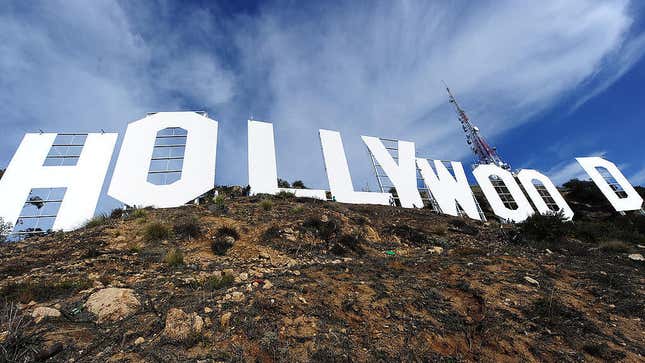Hollywood's Plan to Go Back to Work Is Full of Wishful Thinking
Entertainment

Hollywood is trying to make movie and television production during the pandemic a thing with the ferocity of Gretchen Weiners attempting to normalize the word “fetch.”
Previously, plans drafted for small productions emphasized an extremely minimal “pod” approach to movie-making that would only work if you happen to be making an indie movie with very few people, like The Blair Witch Project. But a new 22-page document endorsed by several major studios and networks, including HBO, Amazon Studios, and Disney Television Studios, outlines a set of safety and health guidelines for shooting projects, IndieWire reports.
The document from the Alliance of Motion Picture and Television Producers includes recommendations for how productions can safely resume, with sections dedicated to disinfecting costumes, creating virtual writer’s rooms, discouraging shows from using live audiences, and avoiding physical contact as best as possible. While the document aims to ensure reopened sets are safer, all of this sounds nearly impossible when it comes to actually making a movie or show as we know it.
The work of makeup artists and hairstylists, for example, “may not be possible while maintaining physical distancing from others.” The document suggests that “cast and crew in close proximity must wear a face mask and/or face shield at all times and perform hand hygiene before and after the encounter,” but then on the same page also reads “face coverings/masks may not be practical during many of these activities”—those activities include performing, getting makeup done, working with costumers, coordinators, etc. Actors are supposed to wear PPE at all times, but the guidelines don’t extend to the actual filming of scenes. The document also urges people to minimize scenes with close contact between performers, such as amending scripts, and says that “stand-ins should wear face coverings even if the performer they are standing in for may not.”
My question is, why on earth are stand-ins (who stand in for actors on set in their place to make sure the camera and lighting set-up is correct) even included in this imagined future of filmmaking during covid-19? I don’t see how the extensive staffing that comes with making a movie or TV show staffed with stylists, make-up artists, stand-ins, and caterers can continue in tandem with suggestions to minimize contact as much as possible. The document also creates a new on-set position of the “COVID-19 Compliance Officer,” who with “specialized training and responsibility and authority for COVID-19 safety compliance and enforcement will be in the workplace to address issues as they arise.” But anyone worth their salt for that job would surely consider film or television production too high-risk to continue normally, right?
Everything in the guideline basically amounts to “this is what should be done, but it might not always be practical,” and the Alliance of Motion Picture and Television Producers leave room for future edits as covid-19 changes. The truth is any iteration of a plan for how Hollywood productions can resume during the pandemic will have to acknowledge the risks for performers and crew because the activity is inherently risky as is.